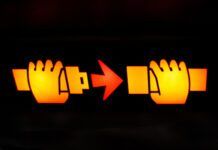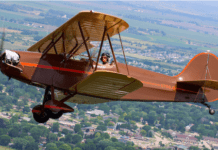Dreamstime
Your body’s wondrous structure of bone, muscle, tendons, ligaments and assorted odds and ends is a fantastic erector set that keeps vital organs safe, and allows for all of life’s perambulations. It lifts, twists, bends on command, and permits pilots to go about their cockpit tasks without a second thought.
But throw a monkey wrench into any part of this complex machine and expect pain, immobility and prolonged downtime. Your aging back is particularly susceptible. It can get even more complicated when it’s not just sore muscles, but bulging discs, displaced vertebrae, compressed nerves or a host of other maladies. If you can’t press the rudder pedals because your feet are asleep due to back-associated neuropathies, you can see why back pain might be just the tip of the iceberg. Your flying privileges may well be at stake.
We’ve once again turned to our sister site University Health News for some guidance. The website has excellent free posts related to back pain, plus free guides on bone and joint health, and managing pain in general. The UHN special health report, Managing Low Back Pain, is especially useful.
The first question you’ll have to ask is: “Where is my pain coming from?” The origins of your back pain will vary from case to case, but family history, gender; age and work history can all be a factor. Is your pain emanating from soft-tissue injuries? Or are your discs—those spongy shock absorbers between the vertebrae—and the dark forces of your nervous system also at play? Is your back pain high near the neck (cervical), mid-back between your shoulder blades (thoracic), in your lower back (lumbar) or the lowest part of your spine, the sacrum? This link is especially useful if you think your back pain is high; and this link might help if your pain is in the mid-back.
Dreamstime
Describing the pain you’re sensing, and where, will help your doctor localize the problem when he or she orders imaging for a closer look. If it’s soft tissue, you might be experiencing pain with movement, a dull ache, a muscle spasm, tightness or stiffness, swelling, bruising or weakness. Soft tissue injury can usually be treated conservatively with superficial cold or heat, exercise therapy and over-the-counter pain relievers. Muscles, ligaments and tendons can be dense and fibrous and take days or weeks to fully heal. Some kind of light physical activity is usually advised so muscles don’t get stiff or weak.
Low-Back Pain
Here’s where things start to get complicated, and your discs are usually the ringleaders in the plot to keep you immobilized. First, your doctor will be looking for a bulging disc impinging on a nerve. There are surgical solutions for this kind of situation, but as always, the surgery comes with a degree of difficulty that will need to be assessed. It will require your knowledge and participation in the decision-making.
Degenerative disc disease—between the lower lumbar vertebrae and upper sacral, also known as L5-S1—often causes shooting pains down one or both legs leading to tingling and numbness in one or both feet. The precise term for this condition—in case you hear if from your doctor—is lumbosacral “radiculopathy.” If you get shooting pains and numbness from the buttocks down to your feet and it also involves “the saddle” area of your upper inner legs from genitals to anus, see your doctor immediately. This might be cauda equina syndrome, and without immediate surgical intervention could lead to incontinence and prolonged immobility.
Spinal Stenosis
With spinal stenosis, the spinal canal becomes narrow and compresses nerves, causing pain. A number of factors have been identified that lead to this condition, but all are related to mechanical destabilization of the spine over time. Discs are degenerating, providing less cushioning effect between vertebrae. Arthritis is causing spinal narrowing. Ligaments become less flexible with age and tug the vertebrae closer together. People with spinal stenosis may also develop bone spurs on the back wall of the spinal column, further narrowing the spinal canal.
What’s a Body to Do?
Depending on your situation, your doctors will be reluctant to jump right into surgery to deal with your bad back. You’ll first hear the words “conservative care,” and that usually means a tight-knit family of interventions that will likely relieve your pain and get you back in the game.
No one likes to hear it, but losing weight will be high on the list of things to do. Extra pounds lead to extra stress on knees, hips, and especially backs. Shedding pounds will relieve stress on discs, nerves and soft tissue. You won’t have to deprive yourself, but you will have to look at food in a different way. Start by eliminating sugar and salt from your diet to the extent possible, then process carbohydrates, usually in the form of bread or sweets. Stick to a plant-based diet, and have piece of fish twice a week. Don’t forego the steak! Just stick to a filet and skip the marbled ribeye (as much as we hate to admit it).
Dreamstime
Next, get to the gym and start working on your core. There’s some very good information on simple core exercises here. You’ll want to speak to a trainer who can take you through some basic moves like “the dead bug,” and the “plank.” Good gyms now have foam rollers that help you get the kinks out. The idea is to keep moving, but don’t overdo it to the point where you injure yourself and incur downtime. Slow and steady effort wins the race
Over-the-counter pain meds will help ease any discomfort. But opioids are probably a no-go for serious pilots.
Your attitude about your back pain will become very important at this stage. You have to come to grips with the idea that some kind of back issue will be part of your future. As such, back pain often can’t be entirely eliminated but at least accommodated. You owe it to your colleagues and your family to give this supreme challenge your best shot so you come out on top.

































